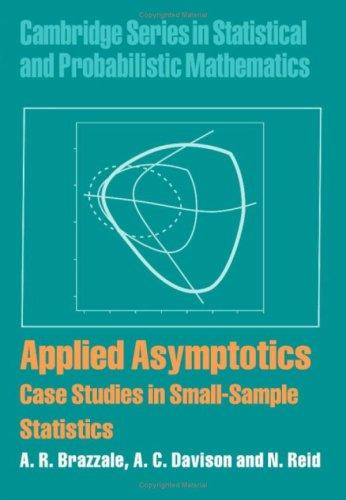

Most ebook files are in PDF format, so you can easily read them using various software such as Foxit Reader or directly on the Google Chrome browser.
Some ebook files are released by publishers in other formats such as .awz, .mobi, .epub, .fb2, etc. You may need to install specific software to read these formats on mobile/PC, such as Calibre.
Please read the tutorial at this link: https://ebookbell.com/faq
We offer FREE conversion to the popular formats you request; however, this may take some time. Therefore, right after payment, please email us, and we will try to provide the service as quickly as possible.
For some exceptional file formats or broken links (if any), please refrain from opening any disputes. Instead, email us first, and we will try to assist within a maximum of 6 hours.
EbookBell Team

4.8
94 reviewsIn fields such as biology, medical sciences, sociology and economics researchers often
face the situation where the number of available observations, or the amount of available
information, is sufficiently small that approximations based on the normal distribution may
be unreliable. Theoretical work over the last quarter-century has led to new likelihoodbased
methods that yield very accurate approximations in finite samples, but this work
has had limited impact on statistical practice. This book illustrates by means of realistic
examples and case studies how to use the new theory, and investigates how and when it
makes a difference to the resulting inference. The treatment is oriented towards practice
and is accompanied by code in the R language which enables the methods to be applied in
a range of situations of interest to practitioners. The analysis includes some comparisons
of higher order likelihood inference with bootstrap and Bayesian methods.
--Preface--
The likelihood function plays a central role in both statistical theory and practice. Basic
results about likelihood inference, which we call first order asymptotics, were developed
in fundamental work by R. A. Fisher during the 1920s, and now form an essential and
widely taught part of both elementary and advanced courses in statistics. It is less well
known that Fisher later proposed a more refined approach, which has been developed over
the past three decades into a theory of higher order asymptotics. While this theory leads
to some extremely accurate methods for parametric inference, accounts of the theory can
appear forbidding, and the results may be thought to have little importance for statistical
practice.
The purpose of this book is dispel this view, showing how higher order asymptotics
may be applied in realistic examples with very little more effort than is needed for first
order procedures, and to compare the resulting improved inferences with those from
other approaches. To do this we have collected a range of examples and case studies,
provided details on the implementation of higher order approximations, and compared
the resulting inference to that based on other methods; usually first order likelihood
theory, but where appropriate also methods based on simulation. Our examples are
nearly all derived from regression models for discrete or continuous data, but range quite
widely over the types of models and inference problems where likelihood methods are
applied.
In order to make higher order methods accessible, we have striven for as simple an
exposition as we thought feasible, aiming for heuristic explanation rather than full mathematical
rigour. We do not presuppose previous knowledge of higher order asymptotics,
key aspects of which are explained early in the book. The reader is assumed to have knowledge
of basic statistics including some central classes of models, and some experience of
standard likelihood methods in practice. We intend that the book be useful for students of
statistics, practising statisticians, and data analysts, as well as researchers interested in a
more applied account of the methods than has so far been available. Our effort has been
made practicable by software developed by Alessandra Brazzale and Ruggero Bellio over
many years, of which the hoa package bundle now available in R is the culmination.
This software is extensively used throughout the book, and the ideas behind the hoa
packages, described in Chapter 9, formed the basis for our approaches to programming
when new software was needed for some of the examples. The hoa package bundle and
other materials may be obtained from the book’s web page
http://statwww.epfl.ch/AA